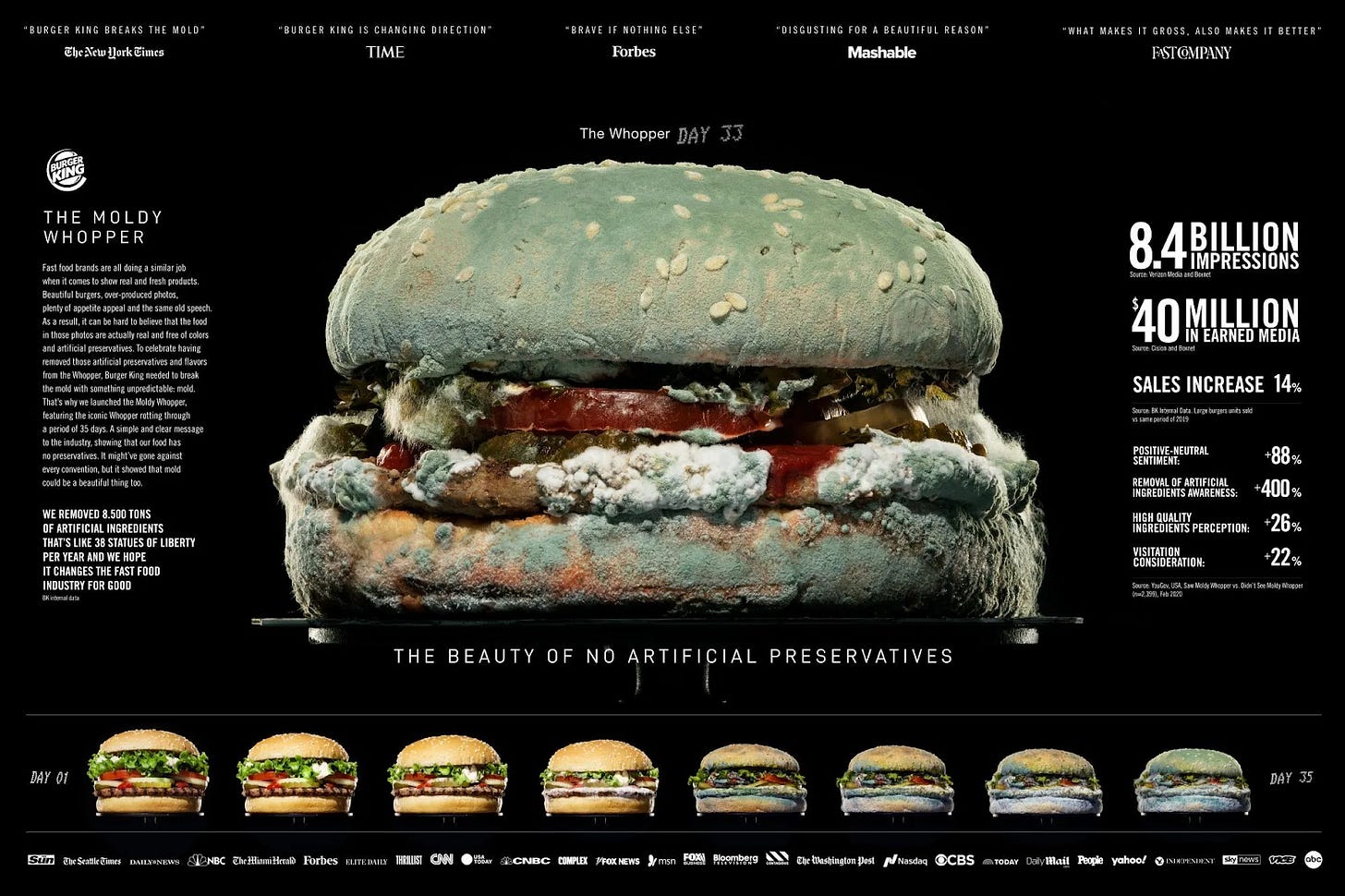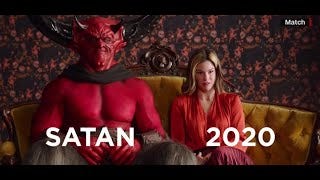Here lies the story of 2020, one ad at a time.
JANUARY
2020 was going to be our year. What an elegant number, a lovely square of a square, the short-hand for perfect vision. I had high hopes and optimism for the future. The biggest fear factor on the horizon was the Presidential election, but I had full faith that one of a diverse set of Democratic candidates would defeat the wanna-be despot in the Oval Office.
But let’s turn to China, shall we? In numerology, you add numbers till you get to a single digit, and 2020 adds up to four. This number is for China as 13 is for many Western countries--so unlucky that it’s often skipped in elevators, and that round tables are preferred over square as to avoid four corners. Why? Well, four sounds the same as the word death.
By mid-January, China had shut down an entire city to contain a mysterious virus. But other topics occupied our minds. Even there, much of China was focused on the Chinese New Year on January 25th. Just as millions planned their soon-to-be-cancelled holiday travel, Nike put out this sweet ad about family and New Year’s traditions.
FEBRUARY
Even though America had lived under Trump for three years and the divisiveness was already palpable, the biggest debate in the ad world was about this moldy Whopper ad from Burger King.
During Ad Bowl Jeep’s Groundhog day ad was a fan favorite; little did we know how intensely we would all live that groundhog day life soon.
MARCH
Everything changed.
Coronavirus shut down the world. Pop-up morgues appeared on New York City streets. Travel came to a stand still. Ads were pulled for messaging that seemed all wrong in light of the pandemic. We learned new phrases and new behaviors--essential workers, social distancing. We applauded the doctors and the DoorDash workers who went out each day to keep us alive, and for one soft moment it was all of us, staring in the face of the unknown, praying for each other.
No one knew what to say, so they said it was “unprecedented.” Every advertiser said the same thing. Montage upon montage, mournful piano music, poems and pablum were all we could emotionally handle.
APRIL
Action was the name of the game. We banded together around small businesses, like Vans did with Foot The Bill.
And we gathered around our screens, anything to keep us home, occupied, distracted from the mounting death count. Between Animal Crossing, Tiger King, and Travis Scott’s Fortnite concert, we gravitated towards experiences that gave us a sense of collective even though we were apart.
But one voice stayed woke, and that was Steak-Umm Twitter. Rather than the typical brand’s jokey Twitter voice, Steak-Umm got real serious and told it like it is. They’ve wrapped up their diatribes here.
MAY
A dull throbbing continuation of April, and of March. We hit 100,000 deaths. Commemorated on the New York Times with a stark list of 1000 names going on for 3 pages.
What seemed to be an anomaly became “the new normal.” Facebook announced permanent remote work options for its employees, and we stop thinking of this as an anomaly and start thinking of it as the new normal.
But even new normal was a myth. On May 25th, George Floyd was killed by police, and his life and his death changed everything. Again.
JUNE
After months of lockdown, people of all races flooded the streets in support of Black Lives Matter. Police violently shut down those protests, and counter protests of armed white people showed up. A divisiveness that had been subdued by the pandemic violently found its spotlight.
From an advertising perspective, how do you respond? No one really knew. Nike came out first with this awkward version of their Just Do It tagline. Ben and Jerry’s got real with a Defund the Police ad.
But Floyd’s death—and too many others—also forced a reckoning with America’s ugly racial history (and caught on around the globe). It had us questioning all kinds of institutions. Advertisers like REI and North Face boycotted Facebook for its lack of control of hate speech on its site.
AdAge has kept a list of companies finally examining their complicity in racial injustice and working towards rectifying it. I appreciate that the list continues, because America’s painful history with race has been hundreds of years in the making, and it won’t be solved in one summer.
JULY
After a month of protests, brands found their voice. Nike’sYou Can’t Stop Us messaged about the lessons sports teaches us to battle all kinds of challenges, from an unseeable disease to undeniable racism.
Against the backdrop of protests, the general election was also in full swing. Biden had been declared the candidate in June and was dropping bottomless cash on advertising. The full election campaign would end up costing a record $14 billion dollars.
In the meanwhile, we struggled on in quarantine. The summer gave us some reprieve from coronavirus, and we found a thread of humor about the rest of our situation. After months of working from home, we wanted to see ourselves reflected back. Apple put out a mini-film and gentle parody about working from home called The Whole Working From Home Thing.
AUGUST
Speaking of Apple, divisiveness in politics and race wasn’t the only thing afoot. Fortnite’s maker Epic Games was in a battle with Apple to reduce its fees on app developers, and produced this take on Apple’s classic 1984 ad.
Kamala Harris also became the first woman of color to run on a ticket as VP, and the Internet exploded with Black, South Asian, and immigrant joy. It took a couple more weeks of the left sorting through their feelings around her background as a District Attorney, but the calm of Joe Biden and the history-making pick of Kamala began to feel inevitable. In true quarantine fashion, Biden told Harris the news over video conference.
SEPTEMBER
The general election was in full swing, and debate season was kicking off. The parallel universes of America became entrenched: on one side, anti-masking COVID conspiracy theorists, alt-right bigots, a delusional President, and his sycophant party rallied in red hats; on the other, anti-establishment progressives, Black Lives Matter protesters, scared centrists, fans of science made an uneasy truce to get across the finish line in November.
Many brands stayed far far away from taking sides, as the outcome of November stayed opaque. But Patagonia did not GAF; they sewed Vote the Assholes Out into the tags of their clothing items.
And the one thing that brought us together?
The joy of a man skateboarding while singing Dreams and drinking Ocean Spray. I watched this approximately a thousand times, escaping into a vibe that felt so free of all things 2020. This short video put Fleetwood Mac’s classic song back on the map, gave Ocean Spray a sales boost, and spawned countless copies of people given an ode to that one pure moment.
OCTOBER
The heated month before the election. Lincoln Project, the team of Republican defectors who wanted only to defeat Trump, had been pumping out hard-hitting social media friendly ads like no other. When Trump gets COVID, most of the establishment shied away from the schadenfreude. But when he bounced back remarkably quickly, Lincoln Project took the gloves off with their Regeneron ad.
A few foolhardy brands waded in to have a say, and that say was, let’s come together, partisans! Oreo tried it out with a too-cute ad fantasy about stuffed elephants and donkeys, and the Gap Photoshopped together two colors of a sweatshirt. No one bought it.
NOVEMBER
The Presidential election had us all biting our nails to the quick—or running buses off the road, depending on which side of the aisle you’re on. The meditation app Calm reminded everyone to take a breath with its sponsorship of CNN’s election coverage.
Biden won on election night, and then again. And again. And again, as the GOP’s attempted to block democracy fail over and over. It was good to see at least one small business get a win: Four Seasons Total Landscaping got more free advertising than it ever could have hoped for after a Giuliani press conference meant to be held at the Four Seasons hotel.
In the midst of the election and the ramp up to the holiday, one of the year’s most searing ads hit. Beats by Dre put out the video You Love Me that dissects the dysfunctional relationship white America has with Black culture. If you click on nothing else in this run-down, click on this.
Watch it, or watch it again.
The holiday season gets kicked off by Amazon, arguably one of the biggest pandemic winners as its consumers were forced to work, eat, live, and shop from home. Its Christmas ad ties together many of the themes of 2020: thwarted plans, Black excellence, dance.
DECEMBER
Oh Ryan Reynolds, maker of the best holiday ads. Last year, his Aviation Gin ads captured the country’s mood, which was let’s-make-fun-of-Peloton. (Who’s laughing now, haters.) This year, his company Maximum effort produced the polar opposite of Amazon’s heartfelt tearjerker for Match.com, which envisions Satan and 2020 as the perfect match.
But 2020’s not over yet. We have another week and half, which is approximately a year by 2020 calculations. Godspeed, my friends.
















